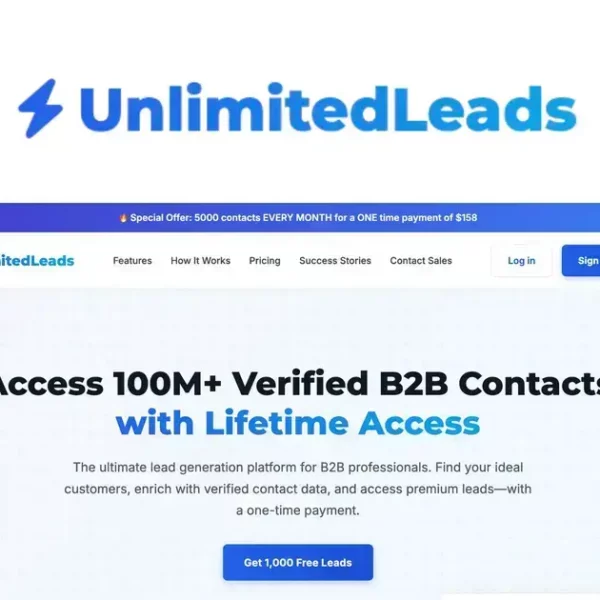A sales tracking program is a powerful tool that helps businesses manage and analyze their sales processes. It improves lead management, enhances customer relationships, and provides valuable insights through reporting, ultimately driving sales growth and efficiency.
Sales tracking program is essential for businesses looking to optimize their sales strategies and improve performance. By utilizing an effective sales tracking program, companies can gather important data about their sales processes, understand customer behavior, and ultimately drive revenue growth. In this article, we will explore what sales tracking programs entail, their numerous benefits, and how to successfully implement them in your business.
Understanding Sales Tracking Programs
Understanding sales tracking programs is essential for any business aiming to enhance its sales performance. These programs allow companies to monitor and analyze sales activities effectively. With the right tools, businesses can gain insights into their sales processes, identify trends, and make informed decisions that drive success.
What is a Sales Tracking Program?
A sales tracking program is software designed to help businesses manage and track their sales processes. It can record important information such as leads, customer interactions, and sales results. By organizing this data, sales tracking programs help teams understand what strategies work and what areas need improvement.
Features of Sales Tracking Programs
Some common features of sales tracking programs include customer relationship management (CRM), pipeline management, reporting tools, and sales forecasting. These features offer a comprehensive view of the sales process, allowing businesses to be proactive and respond to customer needs quickly.
Why Use a Sales Tracking Program?
Using a sales tracking program can significantly enhance a business’s efficiency. It leads to better communication among sales teams and helps in setting clear goals. By utilizing this tool, teams can track their performance in real time, leading to better decision-making and improved sales outcomes.
Making the Right Choice
When choosing a sales tracking program, it’s important to consider factors such as ease of use, integration with existing systems, and customer support. A program that fits seamlessly into your current workflow can provide the best results and help foster a culture of accountability and productivity within your sales team.
Benefits of Using a Sales Tracking Program

Utilizing a sales tracking program provides numerous benefits that can transform the way businesses operate. With these tools, companies can improve their sales processes and maximize their potential for growth.
Improved Sales Visibility
One of the key benefits of a sales tracking program is enhanced visibility into the sales process. This allows teams to see where opportunities lie and identify which leads are worth pursuing. By having clear insights, businesses can prioritize their efforts and allocate resources effectively.
Better Data Management
Sales tracking programs centralize data, making it easier to manage and analyze. This improved data management allows for accurate reporting, helping businesses understand their sales performance. Reports can help identify trends, measure progress against targets, and adjust strategies based on data.
Increased Accountability
With a sales tracking program, team members are held accountable for their performance. The system tracks individual contributions and targets, providing transparency within the team. This accountability can boost motivation and encourage sales staff to perform at their best.
Enhanced Customer Relationships
By using a sales tracking program, businesses can improve their interactions with customers. These programs keep track of customer interactions, preferences, and feedback, allowing sales teams to tailor their approach. This personalized service can lead to higher customer satisfaction and loyalty.
Streamlined Processes
Sales tracking programs help streamline sales processes by automating routine tasks such as follow-ups and data entry. This efficiency frees up time for sales teams, allowing them to focus on building relationships and closing deals. Automation reduces errors and enhances overall productivity.
How to Choose the Right Sales Tracking Program
Choosing the right sales tracking program is crucial for optimizing your sales process. With so many options available, it is essential to evaluate several factors to ensure you select a solution that meets your business needs.
Assess Your Business Needs
Start by identifying the specific requirements of your sales team. Consider what features are essential for your operations, such as lead management, reporting capabilities, and integration with other tools. By understanding your needs, you will be more equipped to find a program that aligns with your goals.
Evaluate User Experience
The user experience is a critical factor in selecting a sales tracking program. Look for software that is intuitive and easy to use. A user-friendly interface will help your team adapt quickly and utilize the tool effectively, reducing the time spent on training and increasing overall productivity.
Check for Integration Options
Ensure that the sales tracking program can integrate seamlessly with your existing software systems, such as your CRM or marketing tools. This integration helps streamline processes and fosters better collaboration across teams, making it easier to share data and insights.
Consider Customization Features
Every business is unique, and your sales tracking program should be customizable to fit your specific workflows. Look for options that allow you to tailor features, reports, and dashboards to suit your needs. Customization enhances usability and ensures that the tool works effectively for your team.
Review Pricing and Support
Finally, compare pricing models and available support options before making a decision. Some programs offer tiered pricing based on features, while others may have a flat fee. Additionally, check the level of customer support provided, including live chat, phone support, or training resources, to ensure you have help when needed.
Key Features to Look for in a Sales Tracking Program

When selecting a sales tracking program, it is essential to understand the key features that can enhance your sales process. These features can significantly impact your team’s productivity and effectiveness in managing sales activities.
Lead Management
A good sales tracking program should have robust lead management capabilities. This feature allows sales teams to capture, organize, and prioritize leads effectively. Tracking leads from the initial contact through to conversion ensures that no opportunity is overlooked.
Reporting and Analytics
Comprehensive reporting and analytics tools are vital in a sales tracking program. These features enable businesses to generate insights on sales performance, lead conversion rates, and overall team productivity. The ability to analyze data and create reports helps in making informed decisions and strategizing for future success.
Pipeline Management
Pipeline management tools help visualize and manage the sales process. A well-designed program should allow users to see the various stages of their sales pipeline. This visibility aids in identifying bottlenecks and understanding which leads require immediate attention.
Integration Capabilities
Integration with other business tools is another important feature. A sales tracking program that can connect with your existing CRM, email marketing platforms, and other essential software will streamline workflows. This connectivity ensures smooth data sharing and improves collaboration across departments.
User-Friendly Interface
A user-friendly interface is crucial for fostering adoption among your sales team. The program should be intuitive and easy to navigate. A simple and aesthetic design will encourage team members to use the program regularly and reduce the training time needed to get started.
Implementing a Sales Tracking Program Successfully
Implementing a sales tracking program successfully involves several strategies that ensure smooth adoption and optimal use. A well-planned approach can help overcome challenges and maximize the benefits of the program.
Prepare Your Team
Before launching the sales tracking program, it is essential to prepare your team. Organize training sessions to familiarize everyone with the tool. Providing clear instructions and support during the training phase helps in building confidence and ensures that staff understand how to use the program effectively.
Set Clear Objectives
Establish clear objectives for what you want to achieve with the sales tracking program. Having specific goals will guide your implementation process and provide a benchmark for measuring success. Make sure your team is aligned with these objectives to foster a sense of ownership.
Start with a Pilot Program
Consider starting with a pilot program to test the sales tracking software with a smaller group before a full rollout. This approach allows you to identify potential issues and gather feedback from users. Adjustments can be made based on this feedback to ensure a smoother overall implementation.
Monitor Progress and Adjust
After implementing the program, continuously monitor its usage and effectiveness. Regularly review data and reports to track the program’s performance against the set objectives. Be open to making adjustments based on observed results and user feedback to optimize the program.
Encourage Ongoing Training
Encourage ongoing training and support to keep your team updated on new features and best practices associated with the sales tracking program. Providing resources and opportunities for learning will help your team utilize the software to its full potential and foster a culture of continuous improvement in sales practices.
In Summary: Unlock the Power of a Sales Tracking Program
A sales tracking program is essential for any business that wants to improve its sales processes and customer relationships. By understanding how to choose the right program and implementing it effectively, your team can gain valuable insights and increase productivity.
From better lead management to comprehensive reporting, the features of sales tracking programs can make a significant impact. Remember to prepare your team, set clear objectives, and monitor progress regularly.
With the right approach, the sales tracking program can help your business thrive and grow in a competitive market.
FAQ – Frequently Asked Questions about Sales Tracking Programs
What is a sales tracking program?
A sales tracking program is software that helps businesses manage and analyze their sales activities, improving overall sales performance.
How can a sales tracking program benefit my business?
It enhances visibility into sales activities, improves data management, and helps in better decision-making, leading to increased sales.
What key features should I look for in a sales tracking program?
Look for lead management, reporting and analytics, pipeline management, integration options, and user-friendly interfaces.
Can a sales tracking program improve customer relationships?
Yes, by tracking customer interactions and preferences, it allows sales teams to personalize their approach and improve customer satisfaction.
Is training necessary to use a sales tracking program effectively?
Absolutely! Training helps team members understand how to use the program efficiently, ensuring they get the most out of its features.
How do I ensure successful implementation of a sales tracking program?
Prepare your team, set clear objectives, start with a pilot program, monitor progress, and encourage ongoing training for best results.




